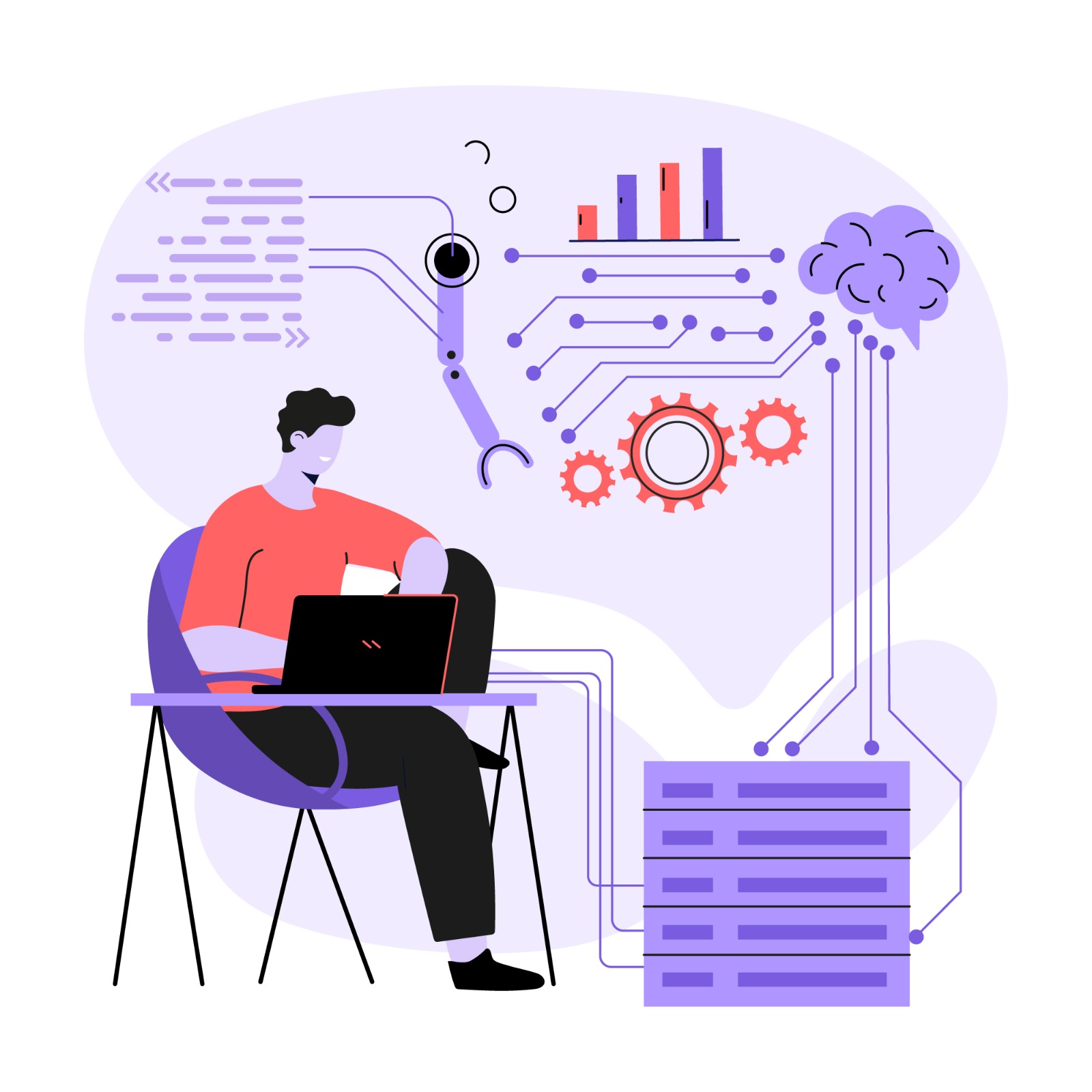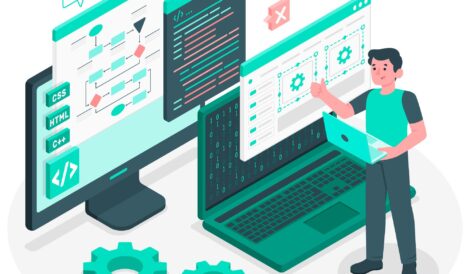admin
- Posted on
- No Comments

These careers support the big data and data science that power AI and machine learning. Data are then readied and interpreted by data analysts before being uploaded to the machine learning algorithms to seek for repeating trends. These algorithms form part of AI processes, and they are responsible for the intelligent activities that AI can perform. In other words, data science provides the information machine learning utilizes it and then artificial intelligence deploys to achieve the desired outcomes.
Data Science
Data science refers to the field of study where the analysis of data is carried out to gather information that can be actionable for business. It is multi-disciplinary as it applies mathematical methods and tools together with statistics, artificial intelligence as well as computer engineering to solve large and complex data sets.
It is important because it refers to the technical methods that are used to make sense of the information obtained from various sources and this is exactly what it is all about. The current trend in business practices has led to data being considered the most valuable asset – especially as the use of technology means that data is collected and retained. Information that is collected in internet sites such as e-commerce industry, healthcare, finance, and other areas of life is gathered digitally through platforms and websites with the use of payment portals. Besides, with the fact that there is a big amount text, audio, video and picture data, we have had a lot of information.
Machine Learning
- The area of computer science and artificial intelligence (AI) called “machine learning” focuses on using data and algorithms to simulate human learning processes and progressively increase their accuracy.
- Image recognition is a well-known and widespread example of machine learning in the real world. It can identify an object as a digital image, based on the intensity of the pixels in black and white images or colour images. Real-world examples of image recognition: Label an x-ray as cancerous or not.
Supervised learning
- Supervised learning, also known as supervised machine learning, is a subcategory of machine learning and artificial intelligence.
- It is defined by its use of labelled datasets to train algorithms that to classify data or predict outcomes accurately.
- An example of supervised learning is text classification. In this set of problems, the goal is to predict the class label of a given piece of text.
- One particularly popular topic in text classification is to predict the sentiment of a piece of text, like a tweet or a product review.
Unsupervised learning
- Unsupervised learning is the algorithm in which a data set is used to find patterns in a set with neither labelled nor classified data points with the use of artificial intelligence.
- The unsupervised learning method arises when an unsystematized set of data is supplied to the system and left to search for correlations in the data.
- The two examples of cases are, dimension reduction and clustering.
Reinforcement learning
- Reinforcement learning (RL) is an area of machine learning concerned with how intelligent agents ought to take actions in an environment to maximize the notion of cumulative reward.
- Reinforcement learning is one of three basic machine learning paradigms, alongside supervised learning and unsupervised learning.
- Some of the autonomous driving tasks where reinforcement learning could be applied include trajectory optimization, motion planning, dynamic pathing, controller optimization, and scenario-based learning policies for highways.
- For example, parking can be achieved by learning automatic parking policies.
Artificial Intelligence
- One of the booming technologies of computer science is Artificial Intelligence which is ready to create a new revolution in the world by making intelligent machines.
- Artificial Intelligence is now all around us. It is currently working with a variety of subfields, ranging from general to specific, such as self-driving cars, playing chess, proving theorems, playing music, Painting, etc.
- AI is one of the fascinating and universal fields of Computer science which has a great scope in the future. AI has a tendency to cause a machine to work as a human.
How are Artificial Intelligence Machine Learning and Data Science Related?
Data science: Data science is a type of machine learning that relates to statistics, data visualization, and other fields. It helps us to identify substantial trends from highly voluminous data which is crucial for making decisions concerning research, technology, and business.
Machine learning: Machine learning comes under data science and artificial intelligence involves statistical techniques and algorithms for data. This helps in predicting machines as well as learning without the need to give it a direct program
Artificial intelligence:The designing and development of the robots that can think and explore problems which come under the human ability is known as the artificial intelligence.
Data science vs AI vs ML
Understanding the distinctions between Data Science, Artificial Intelligence (AI), and Machine Learning (ML) is essential for grasping their unique contributions to technology. Here’s a breakdown of their key differences:
Data Science | Artificial Intelligence | Machine Learning | |
|---|---|---|---|
Primary Goals | To develop skills necessary to use computers to analyze and interpret data for making decisions. | To construct a computer that can be as smart as a human. | To build an algorithm that learns from experience and updates itself according to experience to improve the model. |
Key techniques | Data mining, statistics, data visualization and prediction of a trend. | Artificial intelligence: machine learning; natural language processing; robotics; and expert systems. | Classification and regression trees, clustering, association analysis, regression, reinforcement learning, and neural networks. |
Applications: | Business intelligence; scientific literature; health analytics; or marketing research. | Cars that drive themselves, Amazon Echo, automated machines and play stations. | pattern recognition, image and speech processing, recommendations, anomaly detection, and predictive analytics. |
Tools and Technologies | Keras API, TensorFlow, OpenAI, IBM Watson. | Scikit Learn, Tensorflow, Pytorch, and Rapidminer. | |
. Interdependencece | Serves as the source of raw data and also the foundation of AI and ML. | Uses machine learning algorithms to augment its abilities. | Depends on the data to validate and tune the models developed by Data Science. |
Benefits of AI and ML
AI (Artificial Intelligence) and ML (Machine Learning) are revolutionary technologies that are transforming the way we live in many aspects. Here are a few of the main advantages:Here are a few of the main advantages:
- Enhanced Productivity and Efficiency: AI automates monotonic jobs, and people can focus on more complex tasks. This is demonstrated in the industries of industry, customer service, and data entry, in which AI-powered systems are responsible for dealing with repetitive tasks.
- Improved Decision Making: AI will be a great tool to analyse the data and identify patterns that might be overlooked. This makes it possible to make more intelligent decisions in other spheres of the economy like in marketing, finance, healthcare, and science.
- Enhanced Accuracy:AI can clearly conduct very precise functions and greatly reduce the rate of mistakes. This is especially true for those fields in which even a minor error can cause significant harm to people, for example, during financial transactions and making a diagnosis.
- Customized Experiences: AI can alter the experience to suit individual likings. Customization through recommendation engines, for instance, streaming services and e-commerce sites, may enhance the user experience and loyalty.
- Innovation and Problem-Solving: AI technologies allow us to analyze big data sets and to uncover patterns that are not so obvious, thus, helping us to solve the most complex problems. The future may see breakthroughs in material science, medicine, and energy exploration as a consequence of this.
Now it is moving companies by assisting in making decisions, performing heavy routines, and providing deep insights when used together with ML and AI. These technologies offer companies the choice of improving their operations and maintaining a competitive edge. The mission of Netcom Academy is to ensure that the student receives information and skills and has the proper tools to gain access to this ever-changing industry. These AI and ML courses with data science specialization aim to help you gain the correct knowledge that will allow you to live in modern life heavily relying on technology. Take the bold step to evolve from the ordinary to the extraordinary with Netcom Academy – here is how to unleash your highest level of productivity.



